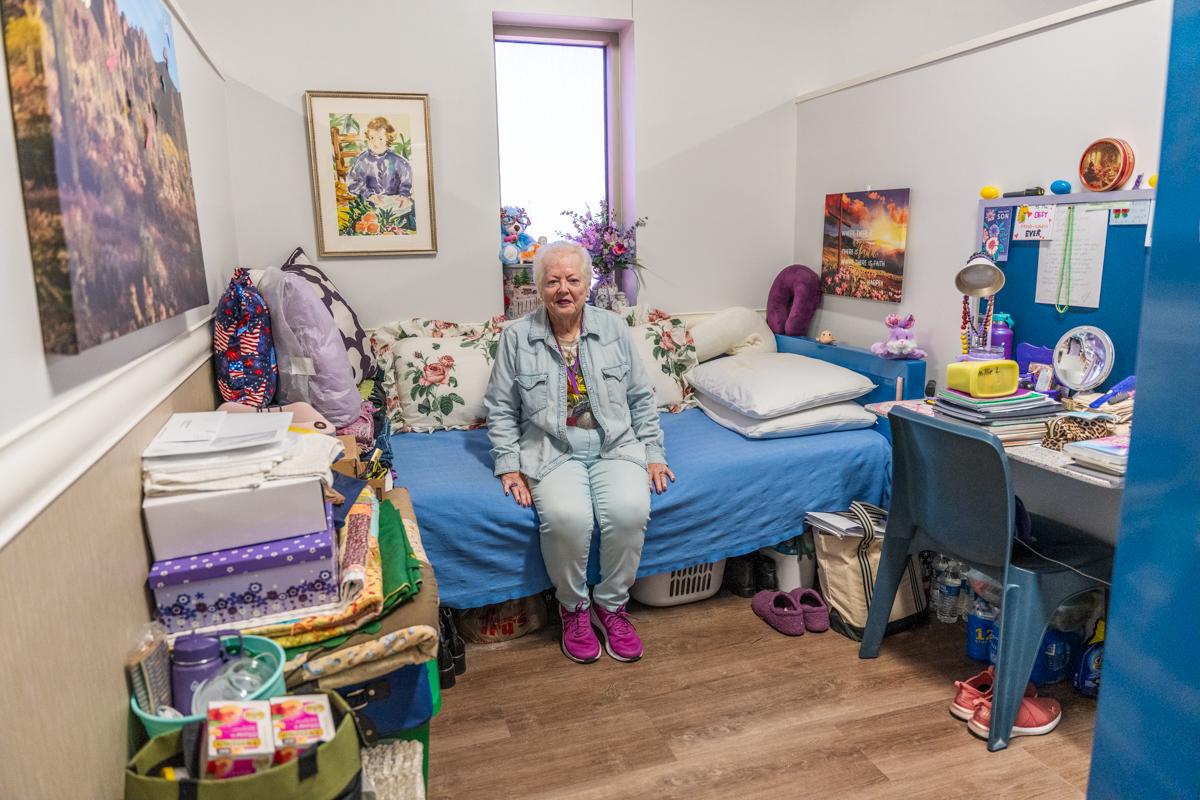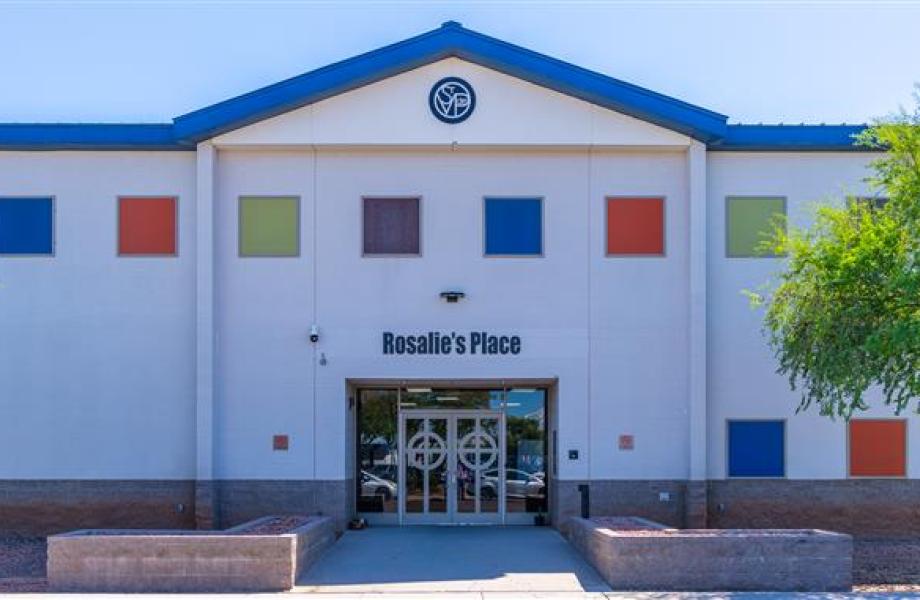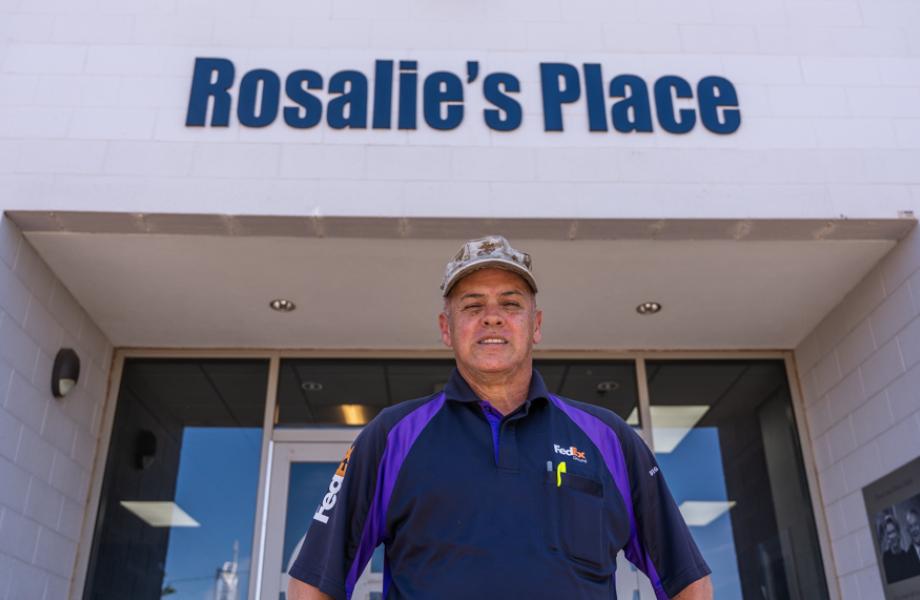One amazing year of De Paul Manor!
It's been a year since St. Vincent de Paul opened De Paul Manor, and already the 100-bed transitional housing program is proud to have served 159 people and seen 50 positive exits, including 43 into permanent housing.
"That's the ultimate success for us," said SVdP Associate Chief Program Officer Julia Matthies, who has worked in SVdP's interim housing programs for over seven years. "What we're always driving toward is getting people into housing."
De Paul Manor specifically focuses on providing transitional shelter for unhoused seniors and adults living with disabilities.
“We don't just provide walls and staff to keep people off of the streets,” Julia said. “We provide the opportunity for people to build friendships, to interact with volunteers and community members, to build the support system that's going to follow them after they move out.”

On top of providing safe shelter, devoted beds, and a warm community, De Paul Manor also offers three warm meals every day and more wrap around services to its residents as they work toward gaining permanent housing.
Some of those services are full-time case management (to help them navigate the intricacies of finding housing and getting access to income), the use of computers and Wi-Fi (to file paperwork, connect with family, and submit rental applications), transportation to medical facilities, and connection to other SVdP programs and resources.
That includes connection to the two other programs operating within the new 50,000-square-foot building as De Paul Manor:
- The Marion and Bob Auray Companion Animal Clinic, 3,000-square-foot clinic which opened its doors in July 2025. It is operated by SVdP's Companion Animal Program alongside volunteer veterinarians, who offer basic veterinary care onsite to the pets of residents living in SVdP's transitional housing programs and emergency shelter.
- The Workforce Training Center, a large training space operated by SVdP's Workforce Opportunities Program to support SVdP transitional housing residents as they work towards stable employment.
“De Paul Manor has become a place of healing, dignity, and transformation for those who’ve experienced the trauma of homelessness,” Julia said. “Its one-year anniversary is a reminder of what’s possible when our community comes together to offer not just shelter, but hope.”
Scroll below to read two different stories of hope from De Paul Manor...

A SPACE OF STABILITY AND DIGNITY
Millie Liermann was living very comfortably in the Valley off her social security retirement and a disability check when she got a curious phone call: The person on the line told her that she had won some money! All she needed to do to get it was pay some of the taxes up front and give some personal information so they could verify her identity, then they would send her the check.
“I fell for it,” Millie said. “I really didn't know how things go now and all the technology and everything. So after I'd given him about $7,000 there was nothing left for me, and he was gone.”
Not only did she send the scammer all her savings, he also used the personal information he sent her to steal her social security and disability money. Over the course of just a couple of weeks, she had no way to pay rent.
“After a few months, I had a constable come and knock on my door and tell me I had 15 minutes to get my medications or whatever, and get out,” she said. “It was such a shock…”
She went to stay with one of her daughters, but after a few days, she told her she couldn’t stay longer. Then she moved in with her step-daughter, but they were hosting another family long-term. Tensions quickly rose to the point that she had to leave her house as well.
Not knowing where else to go, Millie went to the hospital, where they heard her story and decided to connect her with SVdP.
When she got to SVdP, she found refuge in De Paul Manor, where she finally had a stable place to get back on her feet without the constant looming threat of eviction.
After taking time to recover from the last few months of instability and stark loneliness, Millie was able to make some friends and establish a community support system.
“The staff are wonderful, very respectful,” she said. “I loved sitting outside, and it'd be a dozen of us just sitting around talking about life, and so I enjoy the company.”
She also has been able to reassess her situation with her case manager, and they’ve made impressive strides on correcting her situation.
“I got my July [Social Security] payment in the mail, so I'm hoping now it will be straightened out, and I can look forward to getting another place,” she said.
At this point, all Millie can do is wait to see if her Social Security situation is fully fixed, wait to hear back from the disability office, at which point she can start applying for permanent housing. But until then, she knows she has a safe and stable place at De Paul Manor.
“I am very grateful for all they've done for me and are still doing for me,” she said. “I would strongly say it's one of the best places that I've ever heard of and known of. They take very good care of you.”
A PATH TO HER OWN PLACE
Around the time of the COVID-19 pandemic, Robyn Trost experienced a series of losses in her family that left her emotionally devastated and financially unstable. After her husband passed from a stroke, she wasn’t able to afford their living situation, and she entered a period of homelessness that lasted for five years.
She spent that time just trying to survive on the street, living for a time under bridges, getting to know where security guards would let people sleep, and doing her best to conserve energy to survive the deadly summers.
“It was five years of hell,” she said.
But things took a positive turn when she was connected to SVdP by a partner organization’s shelter. She met with some SVdP staff who interviewed her and signed her up to be one of the first residents of De Paul Manor.
When Robyn moved in, she felt enormous relief.
“It’s like an elephant just got off your chest… It was a feeling like, ‘Oh my goodness, I've got a bed. I can sleep.’ A bed is a wonderful thing,” she said. “De Paul Manor is the Cadillac of refuge. It's the best place in the Valley.”
At De Paul Manor, Robyn finally had a safe, stable environment where she didn’t have to constantly watch her back or worry about where she was going to sleep or find a meal.
“The first week was acclimating from the street, getting decompressed,” she said.
Once Robyn was able to adjust to her new safe situation, she worked with the SVdP case managers to forge a way forward to permanent housing. Her case manager was John Leos, who very quickly helped Robyn find an apartment in Mesa that fit her budget.
Before she knew it, Robyn was in her very own apartment after only being in De Paul Manor for six months.
“It just feels so good to have my own place, and the fact that I'm secure, and I'm safe, means I don't have to worry,” she said.
Now, Robyn is redefining her life and catching up on the five years she feels she missed while on the street. One thing about her new life is for certain: She wants to come back to SVdP and serve the organization that served her.
“I want to go back and volunteer at St. Vincent because I don't take away without giving back,” she said, “and they saved my life. De Paul Manor saved my life… so I want to be there.”



